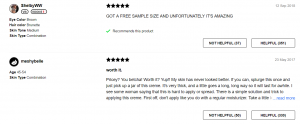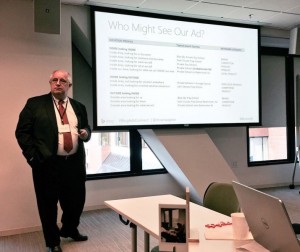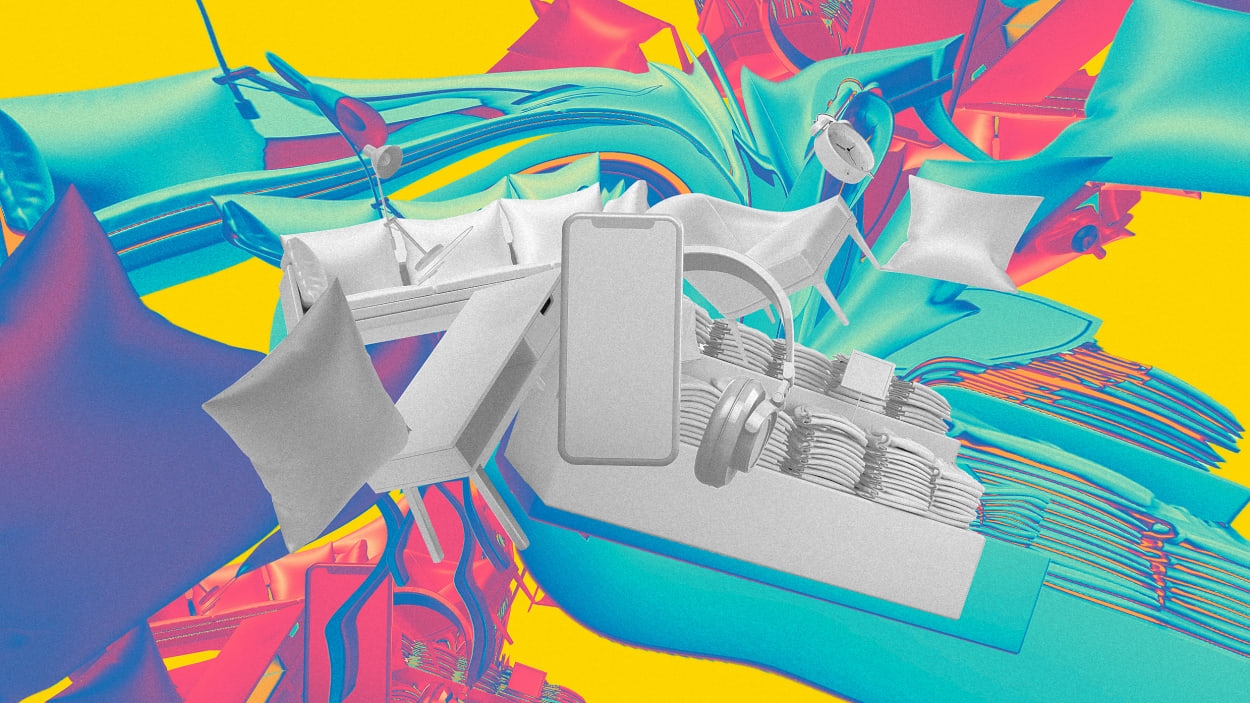
If you’ve spent any time on TikTok lately, you may have noticed a sudden obsession with color—or rather the absence of it.
“There’s been a disappearance of color variety everywhere in the world,” one user says. “Now I’m insecure about liking neutrals,” another comments.
It all stems from a 2020 blog post that claims color has been disappearing from the world. The researchers behind the post used computer vision to analyze the color pixels in 7,000 photographs of objects and how the color of these objects has evolved from the 1800s to 2020. These were sampled from five British museums and split across 21 categories, from electronics and lighting to household appliances.
The team concluded that over the past 200-plus years, browns and yellows—once dominant hues—have declined in favor of dark charcoal gray.
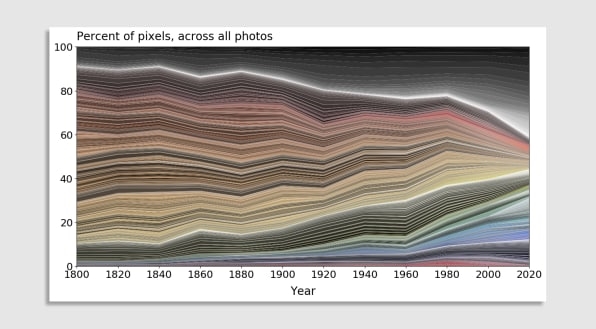
It’s important to note that the post is not a peer-reviewed study. And when Fast Company contacted the data scientist who authored the blog, she said she recognizes that 7,000 objects aren’t enough to draw up a complete representation of color over the course of two centuries. The technology that was used to analyze the pixels in each photo presents several challenges as well.
Despite all that, a broader sweep of data, and the analysis of two individual color experts, say that the findings are true—sort of.

According to HueData, which scours the web for color data and analytics, gray is the most common color in the automotive industry, it’s the most popular color in branding logos, and it’s the second-most popular in fashion shows after black. So yes, humans seem to love gray, but no, color isn’t disappearing from the world. The reality is a lot more complicated than that.
A (very) brief history of color
Let’s start with the basics. The evolution of color is closely tied to where it comes from and how it is produced. Some 17,000 years ago, cavemen used raw materials, like ochre and red earth or white chalk to paint on caves. Pigments were later produced at a larger scale in Egypt and China.
But only when synthetic pigments were introduced in the 19th century did color production explode. (As Time reports, purple, once associated with royalty and power, was the first synthetic dye that could stick to fabric, which fueled a “purple craze” in the late 1880s.)
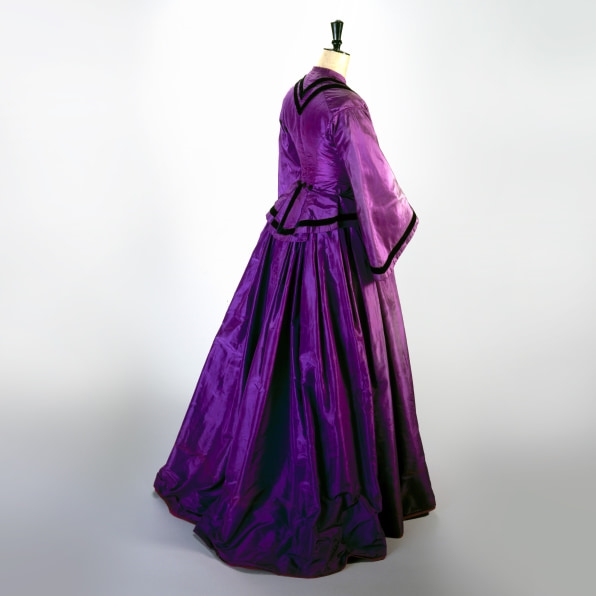
[Photo: SSPL/Getty Images]
More and more colors were democratized through industry over the course of the 19th century, but it wasn’t until the 1960s, when Pantone developed its groundbreaking color-matching system, that hues became standardized. The system took out the guesswork and allowed printers and designers to reproduce the exact colors a company wanted, ensuring consistency across brands, products, and packaging.
200 shades of gray
Today, consumers are faced with a rainbow of choice, and new colors are added every year. Pantone has a whopping 15,000 colors. Benjamin Moore offers 3,500 shades of paint, including almost 200 shades of gray alone. (Take that, E. L. James.)
And in a wide analysis of color on the web, including every single brand of car, 450,000 logos, and 30 years’ worth of fashion show analytics, HueData has logged more than 21 million different colors (though many appear to be digital, too, including hues across social media.) With new techniques and technologies, we can now make more colors than we’ve ever been able to before (although we’re still running out of blue.)

So why is grayscale so common? For one, color doesn’t come just from pigments. It also comes from materials, and the kinds of materials we use have changed drastically over time.
In the 1800s, most objects were made of wood. Then came plastic. And today, aluminum is king. It’s on our electronics, our household appliances, and even the window frames of our buildings.
“The leading color of the era has to be this gamut of grays,” says HueData founder Anat Lechner.

Take phones, for example. In the 1960s and ’70s, plastic phones came in a flurry of shades, from green to red to yellow. Then in 1984, Motorola launched the first wireless phone. DynaTAC 8000X, or more affectionately known as “The Brick” for weighing 2 pounds, was also made of plastic, but it came in only three color schemes: beige and cream, black and white, or white.
A lack of color options didn’t seem to deter the market, though. The Brick was so popular that, according to a 2019 interview with Motorola design master Rudy Krolopp, waiting lists were “in the thousands.”
Mass-producing grayscale
It’s no coincidence that grayscale, and the popular goods of mass production, grew hand in hand.
In the early 1900s, Henry Ford famously said that “any customer can have a car painted any color that he wants, so long as it is black.” Indeed, his Model T only came in black, as applying paint was a complicated, expensive procedure and Ford was hell-bent on prioritizing efficiency in his production line.
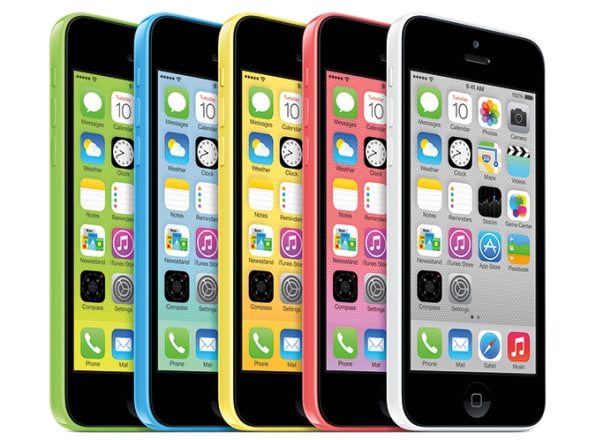
The crux of the matter is that we live in the aforementioned aluminum world, and when you’re producing many of any one product to sell, gray is considered a safe choice. Think of it this way: Every time a company introduces a new color, be it a bright orange car, or a “bubble gum pink” iPhone, they’re introducing more SKUs and growing the inventory.
“We always say a good color sells, a bad color builds inventory, and nobody wants to build inventory,” says Leslie Harrington, executive director at the 100-year-old Color Association of the United States.
Risk-averse companies narrowed the color palette on the assembly line, and risk-averse consumers did the rest. Driven by the promise of resale, Americans are chromatically sheepish when it comes to big-ticket purchases, painting their homes gray (or neutral colors) and driving gray cars. (According to a 2020 survey, more than 72% of cars on the road—read: cars that people bought—were either black, white, or gray.)
And since we live in a country called Capitalism, sales figures matter. As Harrington points out, the vicious cycle even encompasses buyers and the decisions they make about color, aka what sells and what doesn’t.
“If they see that black and gray and white always sells really well, they’re going to keep buying black, white, and gray, and that’s what happened in fashion,” she says.
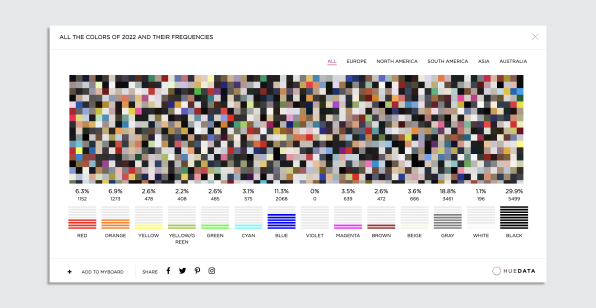
A focus on fashion
Symbolized by “the little black dress,” fashion has long had an obsession with black, and to an extent, the data confirms this. In 2022 alone, HueData shows that black, gray, and white together featured in 50% of fashion shows around the world (this was pulled from a total of 9,000 data points; black came out on top with 29.9%, followed by gray at 18.8%).
But there are important nuances to these numbers. First, the data doesn’t include retail trends, or even colors in the textiles industry. Second, just because gray is one of the most commonly seen shades in fashion shows doesn’t mean it’s the main color on a garment. Gray goes with everything, and accentuates other colors, so it ends up scooting up the chain in frequency of use—but not necessarily overall statement.
This discrepancy is reflected in the original analysis of the 7,000 objects, which found that charcoal gray was the most common color, even though it makes up only a tiny fraction of the pixels in one photograph. “It means that there are a very large number of colors and so even the most frequent color, which is one very particular shade of gray, only makes up a small proportion of all the colors observed,” says Cath Sleeman, head of data discovery at the U.K. nonprofit Nesta and author of the blog post.
Back to non-black
So, that’s just it: While it is true that grayscale tones can be found on products across the board, it doesn’t necessarily mean they’re always displacing other colors.
According to a fashion search engine called Tagwalk, color blocking at this year’s spring/summer shows was up 273% compared to 2021. Meanwhile, Valentino’s Paris Fashion Week show went all in on magenta, and Milan Fashion Week was ablaze with loud prints and colorful sequins. Off the catwalk, some brand consultants are speculating that the rise of e-commerce is driving a spike in bright colors since they photograph better than black.
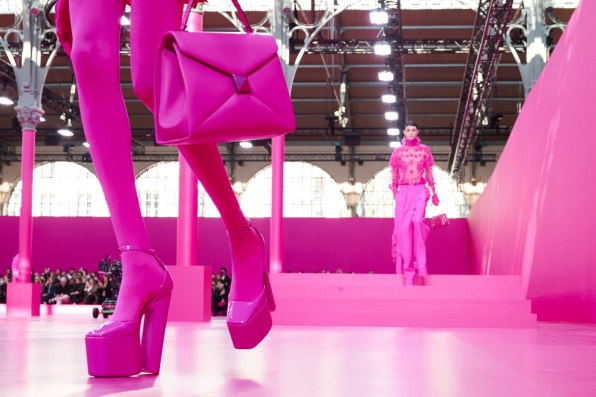
According to Lechner of HueData, another trend may now be turning the gray tides—the rise of customization.
“We’re moving away from 100 years of industrial views and mass production,” she says. “Today, we’re looking to personalize, and the personalization of products, and brands, and touch points with consumers will require different color manifestations.”
So you can buy a custom-painted Porsche, or add a pop of color to your own pair of Nikes. You can even tell an AI to create a highly customized color based on an oral description of a New York City summer sunset.
“It’ll become normative that your color is your color, and you want it embedded in your iPhone, in your shoe, in your car, wherever you want it,” Lechner says.
Naturally, gray is likely to remain a leading color in mass-produced products. But while we’re not exactly entering a rainbows-and-unicorns era, the world isn’t bleeding out of colors either.
(35)
Report Post
